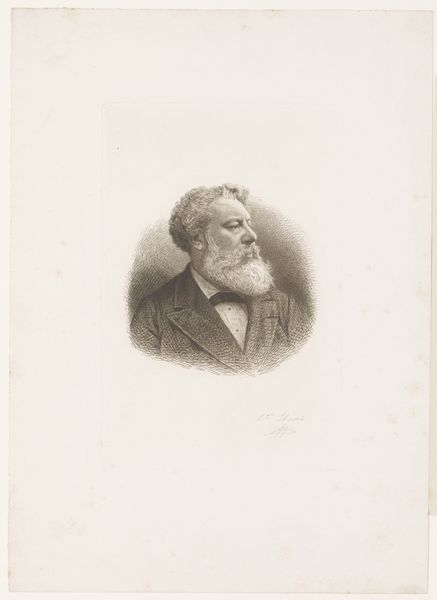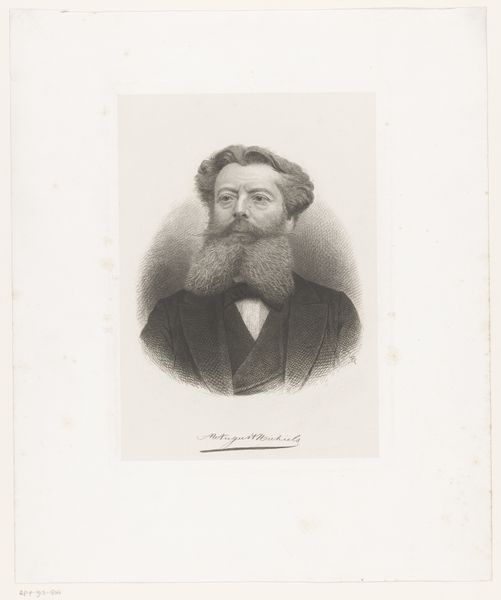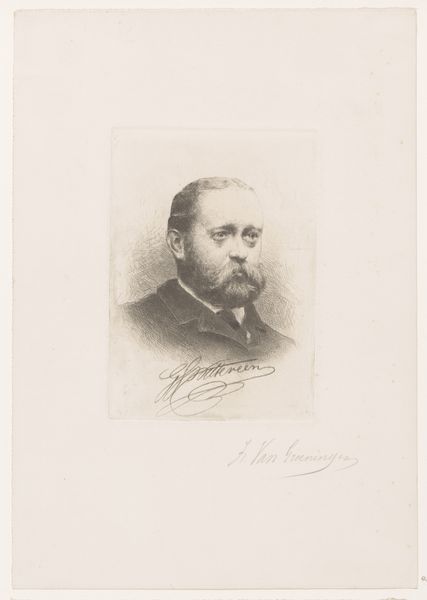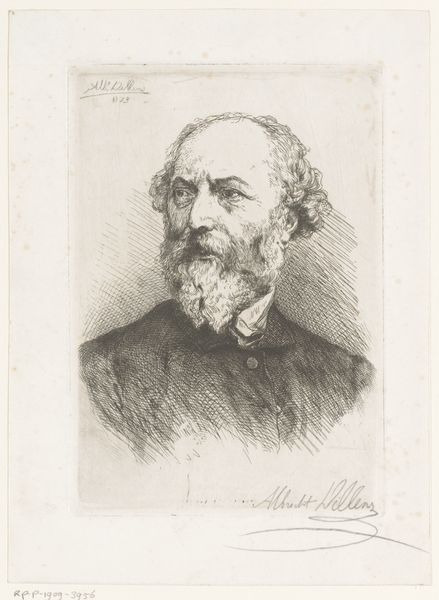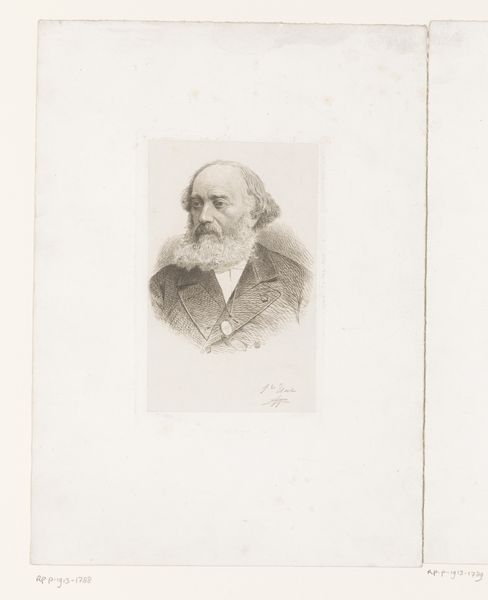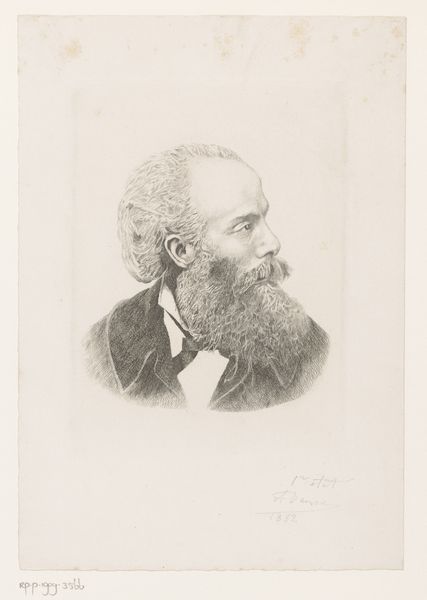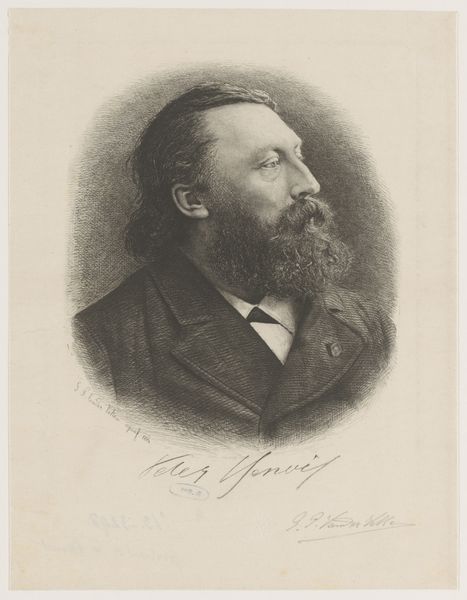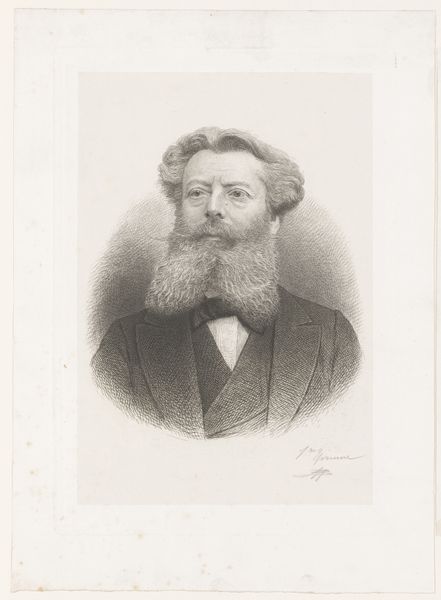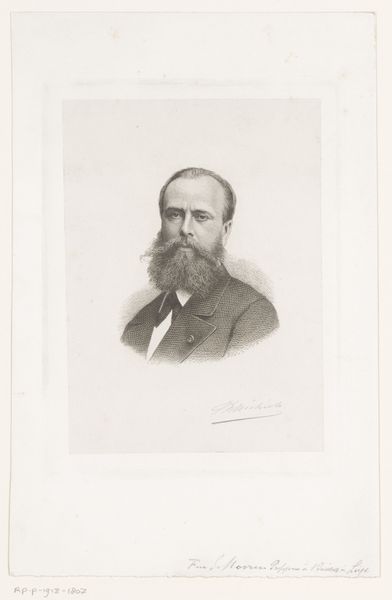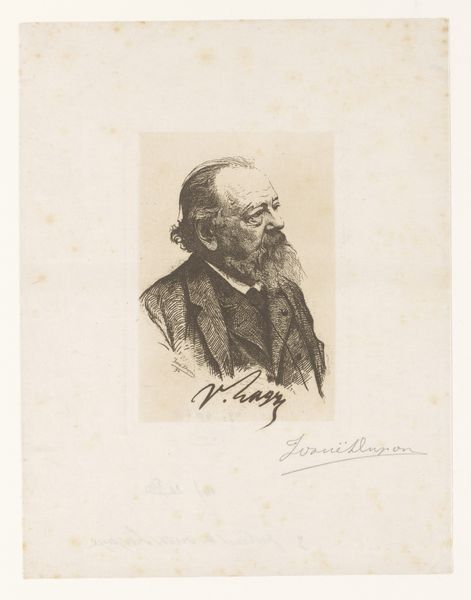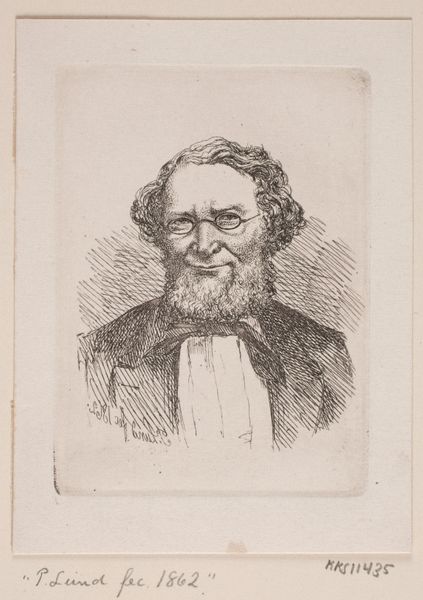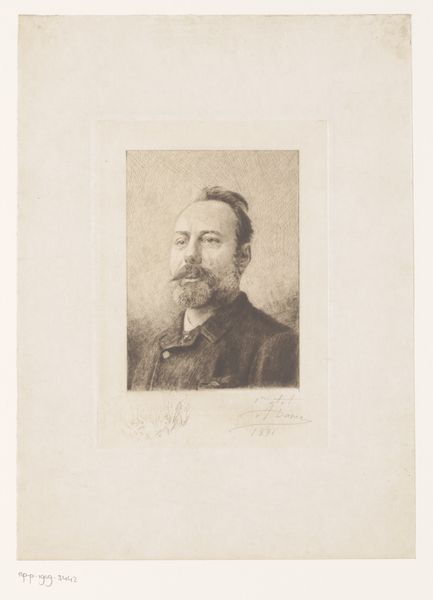
drawing, print, graphite, engraving
#
portrait
#
pencil drawn
#
drawing
# print
#
charcoal drawing
#
pencil drawing
#
graphite
#
portrait drawing
#
engraving
#
realism
Dimensions: height 241 mm, width 180 mm
Copyright: Rijks Museum: Open Domain
Curator: We're looking at Willem Philip van der Veken's "Portret van Peter Benoît," created in 1884. Editor: The textures created with what looks like graphite or pencil are incredible. It gives such a tangible quality to his beard and hair, almost like you could reach out and feel the different strands. Curator: Indeed. Van der Veken was operating in a time when portraiture served as a key tool for constructing public image and commemorating individuals. Notice how Benoît, a renowned musician, is depicted in profile, lending him a sense of dignified contemplation, reinforcing his stature within Belgian society. Editor: It's fascinating how the artist achieved such depth with a relatively simple medium. You can see the mark-making process so clearly, really demonstrating the hand of the artist. The variations in pressure to build shadow feel deliberate, showcasing technical skill and a mindful engagement with the materiality of the graphite itself. Curator: The printmaking process is itself interesting to consider here too. Engravings like this served a crucial democratizing function; allowing images of prominent figures like Benoît to circulate widely, contributing to a shared cultural narrative. They were often included in magazines, so that it becomes much more accessible. Editor: You're right, and I think the accessibility and dissemination element is central to understanding its function as a reproducible image. One really feels the effects of artistic labor here. It certainly wasn’t mechanically produced and it reflects its value by how it creates cultural meanings around labor as well. Curator: It does, in many ways reflect how value is often assigned both to high-born portrait sitters, like the musician here, but also to art objects and their mode of circulation as reflections of Belgian cultural achievements at the time. It helps define and reflect cultural achievement. Editor: Precisely. The contrast between the texture of Benoît’s beard and the smooth finish of his jacket underscores that tension beautifully. Thanks for illuminating those factors in the social and cultural understanding behind the process as well. Curator: Of course! Looking closely at how artists balance technical mastery with social function is essential to considering how visual communication contributes to the building of cultural figures.
Comments
No comments
Be the first to comment and join the conversation on the ultimate creative platform.
